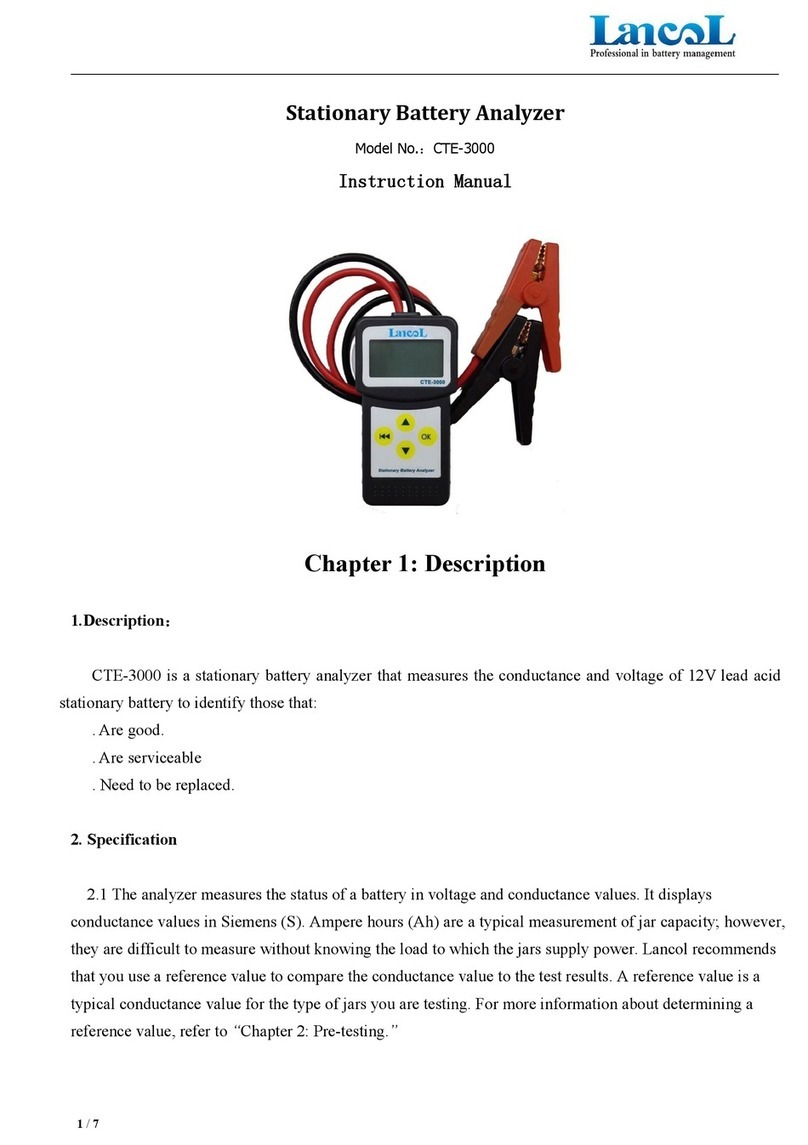
4/13
Options
Lancol recommends that you create your own reference values for a group of batteries to get values
specific to the group you are testing. For this reason, the following options are listed in the order you
should take to obtain a reference value.
1. Consult your company documentation for previous reference values that were created for the group
you are testing. If you do not have previous reference values for the site, do step 2.
2. Test a sample of battery. Refer to “Testing a sample of battery”. If you cannot test a sample of
battery, do step 3.
3. Test the battery in the group that you need to test with the analyzer and use highest conductance
value as a reference value. If you cannot test the battery for a reference value, do step 4.
4. Use the average from the group. Refer to “Using the average in the group”
Testing a sample of battery
To test a sample of battery for a reference value:
1. Choose at least 30 batteries from one manufacture with the same make, model, power rating,
age(within 6 months), and service history.
2. Record this information about the battery
.Battery manufacturer
.Model number
.Date of manufacture
.Date of installation
.Condition the battery operates in, such as charge voltage, temperature, and DC current through the
battery
.Visible warnings, such as leaking acid, corrosion, or distorted battery cases
3. Test the battery. Refer to “Chapter 3: Testing”
4. Test one battery five times. You should get the same conductance result.
5. Figure the average conductance of the battery
Note:Do not include battery that are higher or lower than 30% from the average because they might
be outside an acceptable range.
Using the average in the group
If you cannot obtain a reference value for a group, test all batteries of the group and use the average
conductance value as your reference value.




























